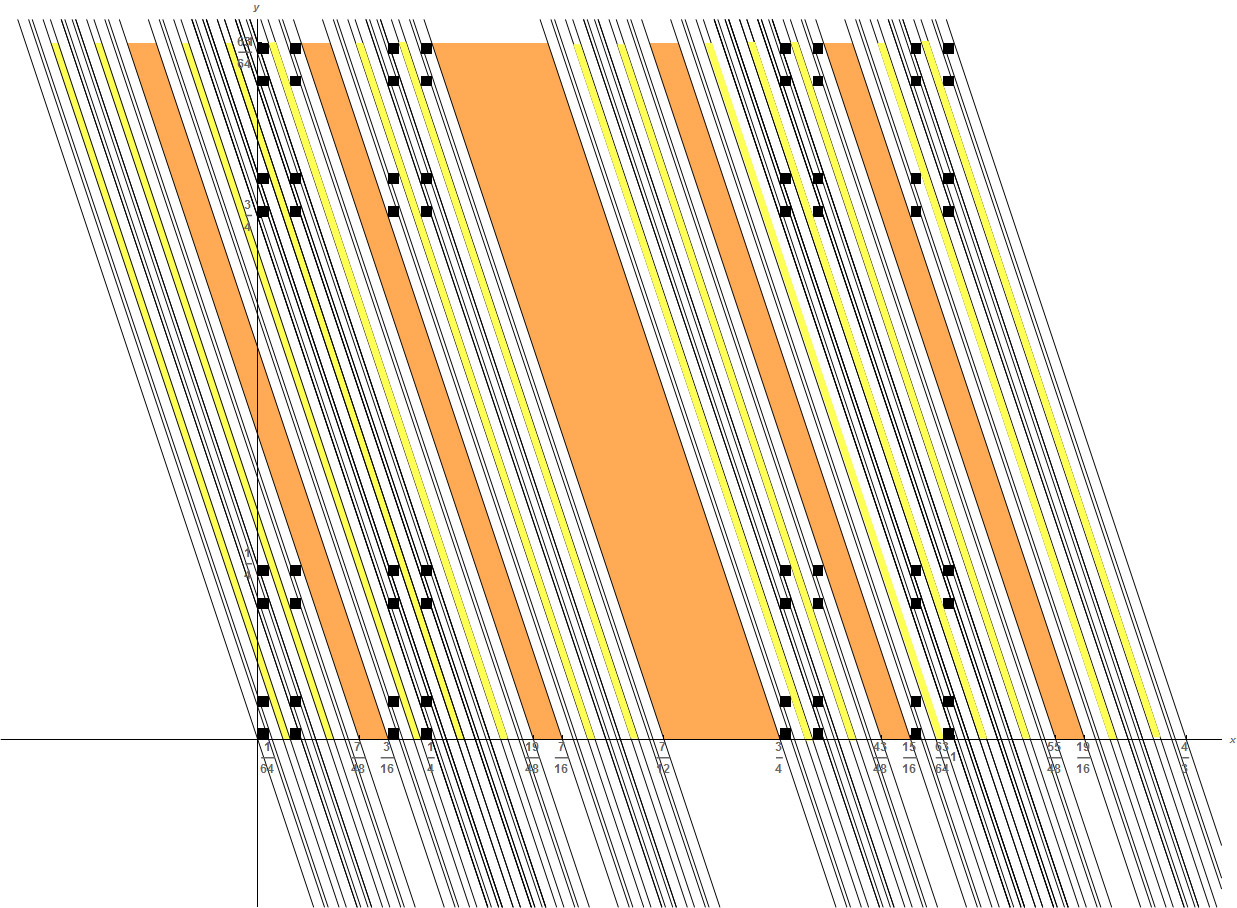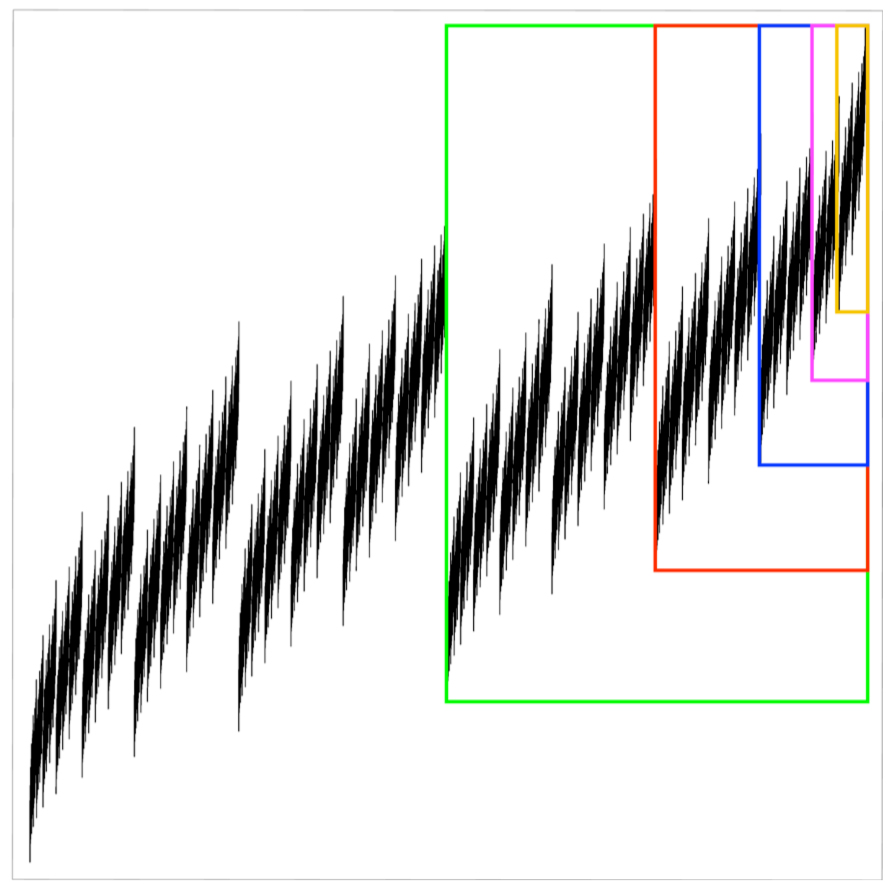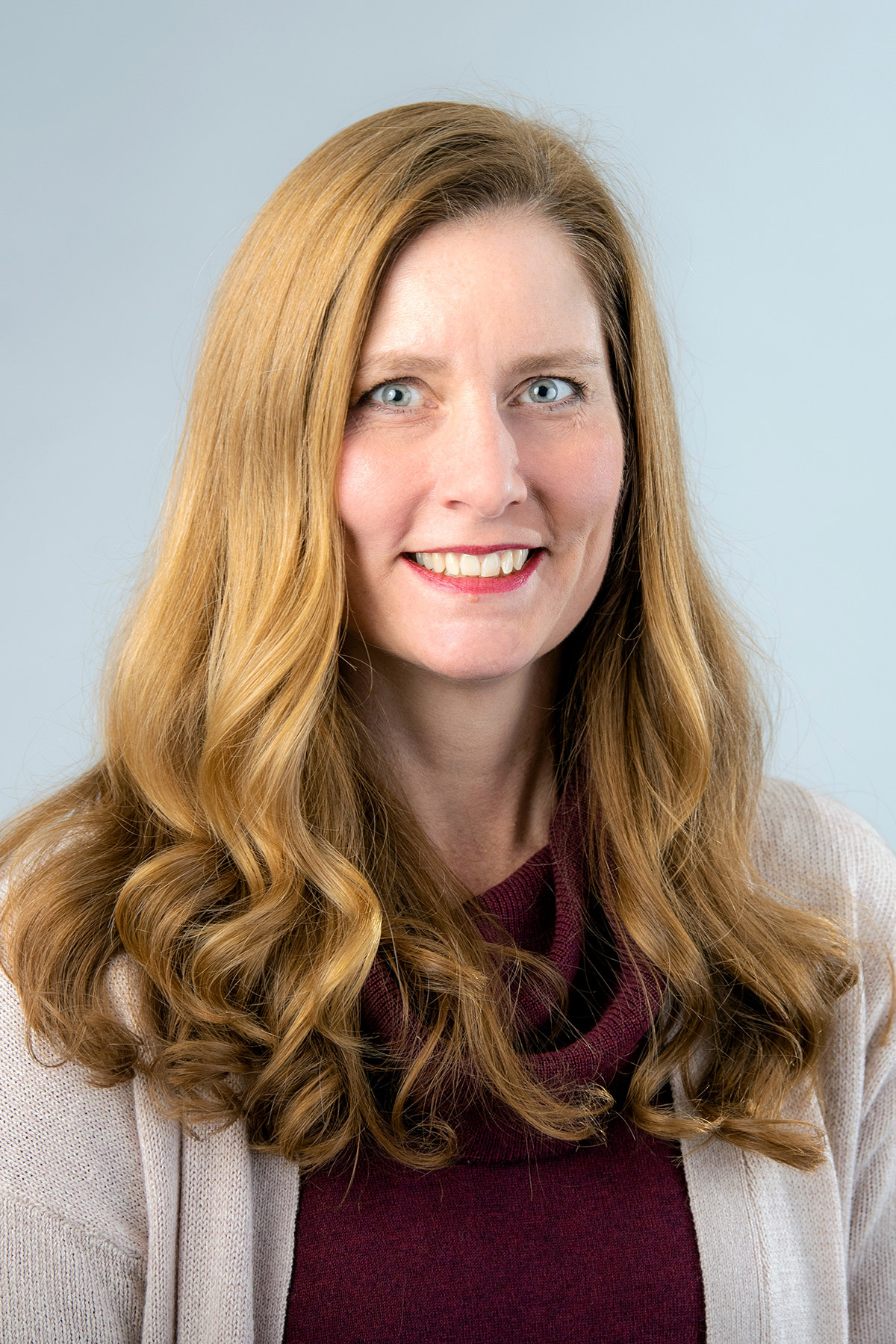Fascinated by Fractals!Math Students Unveil Inventive Research Projects
Fascinated by Fractals!Math Students Unveil Inventive Research Projects
They swing like a song, curl like a coastline, and hover in the mysterious space between dimensions. We’re talking about fractals—mind-blowing geometric patterns that inspired some highly creative projects in Professor of Mathematics Natalie Priebe Frank’s recently completed Intensive. Frank and six of the seven students in Math 301: Fractal Geometry of Dynamical Systems got together over Zoom the week before Commencement to unveil their independent projects and to reconnect after two months of separation from campus.
“It was honestly so great to hear what everyone had accomplished because so much of what we had done was independent work,” said Malcolm Callagy ’20. Frank had asked the students to come up with their own research topic, he said, “so everyone’s personal light shined really well.”

Fractal geometry deals with infinite patterns that repeat across different scales. “They exhibit the property of self-similarity, which means that If you look at small pieces, they look like the whole,” explained Frank. Some are found in nature; for example, the branch of a fern can look just like a whole, tiny fern.
Why would anyone want to spend a whole semester learning about fractals? “Because they’re awesome!” Frank declared.
Two of the students investigated how fractals could connect to music. One of them, Matthew Goldberg ’20, created a digital instrument — a computer program related to a fractal curve that resembles a sound wave. And not just any sound, but the specific tonal range of a harpsichord. When his instrument was ready, he used it to play existing musical masterpieces such as Johann Sebastian Bach’s Prelude and Fugue in C Major, BWV 846.
“This is the first successful merging of math and music that I’ve done,” said Goldberg, noting that this had been a goal of his for years. “I have tried to compose using mathematical notions but I found that either it was too mathematical and not enjoyable, or it wasn’t mathematical enough—the math was just like sprinkles on top. This was different because it was an instrument created mathematically to play beautiful, non-mathematical music.”

Goldberg partially credited the success of his project to classmate Malcolm Callagy, a double-major in math and music, who helped him find an ideal fractal for his instrument. The two worked together on that project until Callagy got seduced by “exploded Cantor sets.”
“The Cantor set is a very famous family of fractals,” said Callagy. “They’ve been studied in math for hundreds of years.”
The set can be hard to see, so Callagy used mathematical calculations to “explode” the fractal to bring more of its properties into view. “We decided to expand it out and decompress it into the plane—a two-dimensional space—to actually see all the detail that gets missed,” he reported. The project took Callagy on a theoretical excursion between the first and second dimension, the details of which he shared with obvious delight.
“That’s something that so many people overlook about math,” Callagy said. “So many people just do it for fun!”
“Working with [Callagy] was like working with a mathematical colleague,” said Frank. “I was able to have a really satisfying scholarly journey with him.” The two will continue working on this project, which Frank believes has the potential to be published.

Another student, Nora Culik ’20, actually did publish. Culik did a complete edit of a textbook on fractals Frank wrote several years ago and used as a reference for the class, then published it online.
Frank said this class was particularly suited to the distance learning necessitated by the coronavirus pandemic. In fact, she said, there were times when the screen-sharing feature of Zoom turned out to be very helpful. “We just did live coding together,” she said. “It was enormously helpful for coding and debugging.”
Still, not everything went smoothly. One student lost crucial access to Vassar’s 3-D printers when he had to return home and another lost contact with the class for a while after moving back to China. But even when she couldn’t reach her students, Frank took comfort in knowing that wherever they had landed, they were still doing the work the class had started together. “There was some dropping off, but at the end of the day, they were doing math, they were pursuing a question, a thing that was theirs, that they were creating, that they owned,” she said. “That really, really made me feel wonderful.”